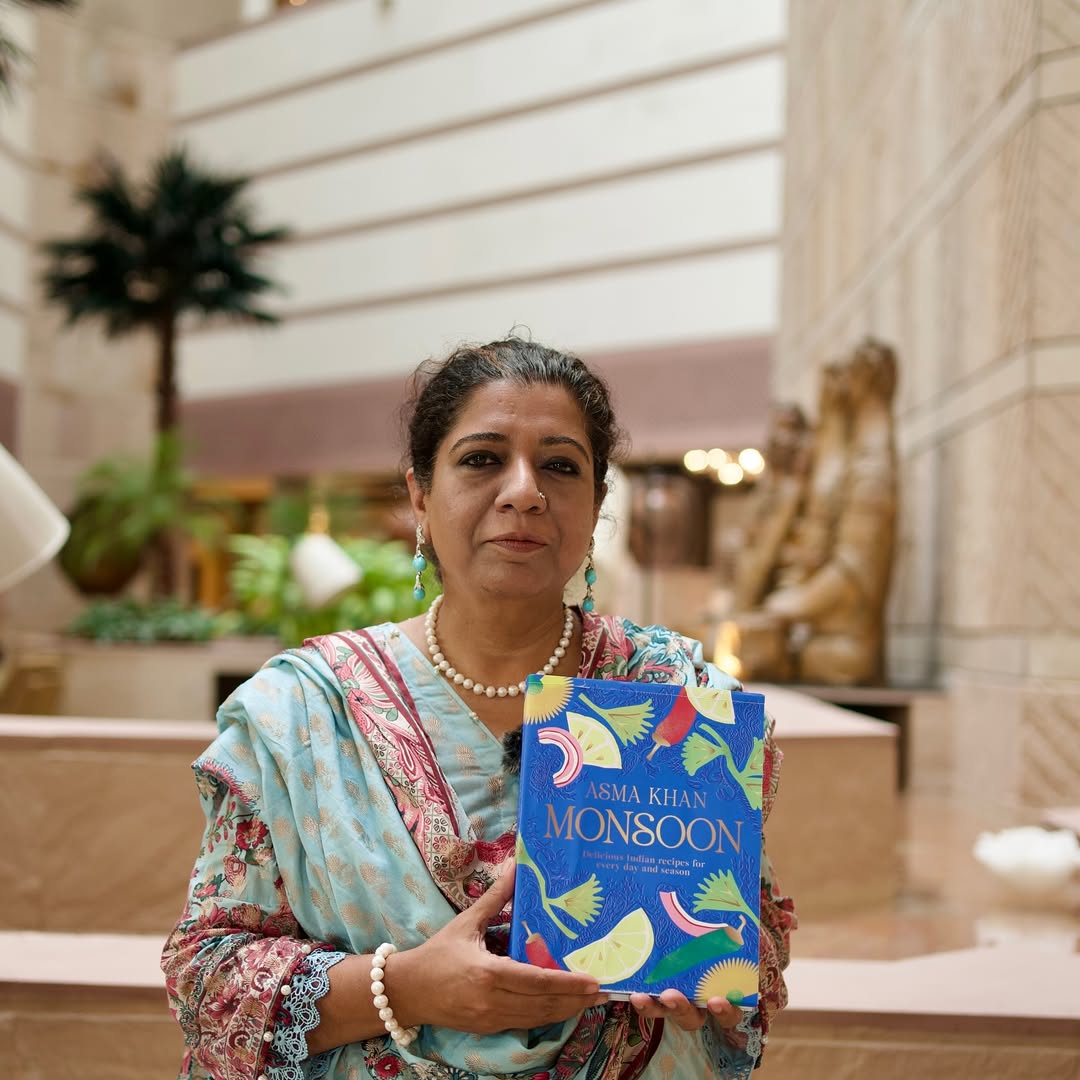
I have long admired the incredible work of chef and author Asma Khan, but nothing quite prepares you for the moment you get to sit down with her. During her visit to Dhaka recently to promote her latest cookbook, Monsoon, I had the incredible chance to have a candid conversation about cooking being a language of love—one that feels more essential now than ever.
I love the title of your book, Monsoon, and how you have structured it around Bengal’s six seasons. When you think about that, is there a particular dish that brings back the most vivid memory for you?
For me, every single one of the monsoon recipes is very significant, but of course, the pakoras are iconic. It’s a bit of a cliché to have chai and pakora during the monsoon, but it is, it’s almost instinctive. The moment it starts raining, that is what you want to have.
On a pragmatic level, I grew up in Calcutta. In monsoons, the bazaar would be overrun with water and no electricity. What you always had at home was a bit of besan, and a little bit of onion or potatoes or whatever. This was a very satisfying, warming, and healing thing to have when there were very few ingredients. The addition of a little bit of ajwain, which is carom seed, is what makes this pakora very special.
I often get a recipe idea from a restaurant and then try to recreate it at home. But for you, it seems like your ideas come from a much more personal place.
I don’t necessarily get inspired or excited by things I have tried somewhere else. I know that’s unusual because most chefs do. I am very much tied to nostalgia and bringing to life those everyday home comfort dishes that mean something to me and my team. We have things like momos—which aren’t part of my culture, but half my team is Nepali—as well as things like gajar ka halwa—again, very emotional—and khobani ka meetha. I try to dig deep into my memories and remember dishes. If the person who used to make that dish is no longer here, I keep playing around with it until I get it right. I am not trying to recreate something I ate; I am trying to recreate something I remember.
It’s so interesting how you cook from memory and intuition rather than following recipes. I have always wondered, how do you manage to translate that kind of “by-feel” cooking into a book?
That’s actually a very important question, because I don’t want people to think that the recipes in this book are instinctive and intuitive—andaz, as we say in my culture. So, I cook alongside a home economist, and she measures everything. I write the book on two levels; firstly, I provide all the timings, measurements, and weights, which I don’t do myself because I don’t cook that way. But someone else is doing it, working right alongside me. Then, what I do is explain the intuition in the text. I describe what you should see, smell, or feel. For instance, “by now your onions should be crisp and brown,” or “all the oil should have come to the edge,” or “you’re going to have this smoky, beautiful aroma when you start roasting the spices.” It’s almost like I am sitting there holding your hand. I am giving you all the tools if you want to follow them precisely, but if you want to cook by instinct, you can also do that. Either way, the recipe will work.
With so many great food delivery and dining options out there, as a chef and an author, what do you think is the biggest challenge home cooks are up against today?
The challenge we face is that we are inundated with everything from viral trends on social media to the ease of food delivery. It all acts as a deterrent to cooking. I think cooking is not about you eating something; we have become consumers.
If you and I were next to each other and cooking the same dish—say, a murg chicken chaap—it would turn out differently because we taste and tweak it as we go. You would possibly add more chillies than I would, and I would add a touch of something else because it’s my personal palate.
The most expensive ingredient you put into your dish is your time and your sensibilities. Cooking is the most personal, most healing thing you can do for yourself.
Your books feel like so much more than just recipes—they’re full of stories and memories. What do you hope readers take away that goes beyond the food itself?
My greatest hope is that the reader takes away this emotional link: Food is not something you just consume; it is sacred. I want people to slow down, put their phones away, turn off the television, and just eat.
I think people should use a cookbook in two ways. First, as a book for inspiration, not necessarily to cook from. This is when you take it, sit in an armchair, or take it to your bed and you read it. You read it for the stories, for the poetry, for the magic, for the photographs. Then, when you actually want to cook, you take it into the kitchen, but don’t mess it up! No ghee stains on it.
I have signed thousands of books because I hope this adds another layer—just as the book is divided into six chapters on the six seasons of Bengal and the six flavours of Ayurveda. The signature is a personal layer from me to the reader. My hope is that every time you see it, you will smile and remember me, and then enjoy cooking from it.
